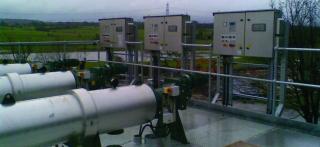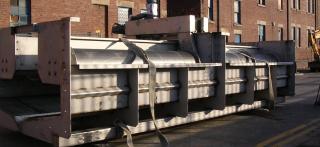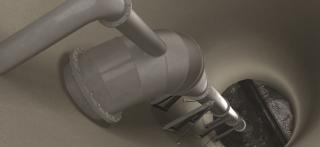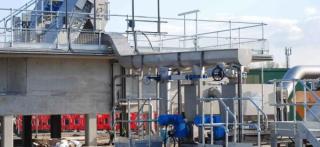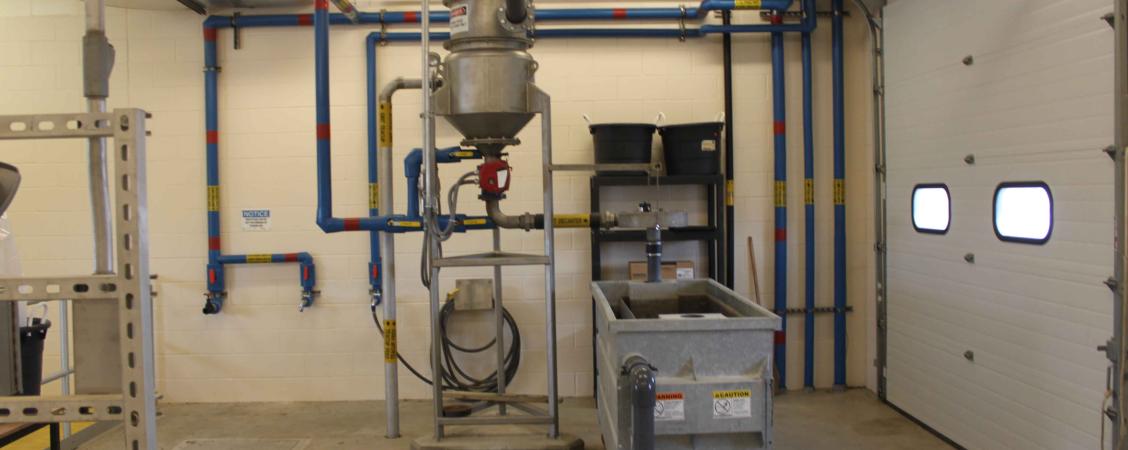
Kewaskum's Grit System Provides the Protection Needed for a Major Capacity Upgrade
A HeadCell® / TeaCup® / Decanter system was selected to protect the plant from the impacts of grit.
Situation
The Village of Kewaskum was named for Chief Kewaskum of the Potawatomi tribe, whose name translates to “turning on his tracks.” This name was chosen because it also describes the Milwaukee River as it makes a horseshoe bend just north of the village.
Kewaskum is located 45 miles (72 km) North of Milwaukee and is known as the Gateway to the Kettle Moraine State Forest.
Problem
This village of 4,220 people began planning for a significant capacity upgrade to the wastewater treatment plant and the consulting firm of McMahon Associates was hired to do the design. The upgrade would result in many of the plant’s airlift pumping systems being replaced with mechanical pumps. Concerns about grit causing wear on these pumps led them to include grit removal as part of the plant’s new headworks.
At the recommendation of the team at McMahon Associates, the village visited a HeadCell® grit removal system installed at a treatment plant in northern Illinois. Based on the positive feedback given by the operations personnel the village decided to include the HeadCell® system in their design. The village also liked the fact that the HeadCell® system had no moving parts in the basin. The only moving part was the grit pump which could be located in an easily accessible area.
Solution
The HeadCell® is a modular, multiple-tray settleable solids concentrator that removes coarse and fine grit with minimal headloss. The high-efficiency flow distribution header evenly distributes influent over multiple stacked conical trays. The multiple stacked trays greatly increase surface area, allowing the plant’s peak flow of 3.0 Mgal/d (11.5 MLD) to be treated in a 9' x 9' (2.7 x 2.7 m) footprint. Tangential feed establishes a vortex flow pattern where solids settle into a boundary layer on each tray and are swept down to the center underflow collection chamber.
It captures very fine particles due to the large surface area and short settling distances. Evenly split flow eliminates thermal short-circuiting, which reduces the performance of conventional grit basins. These settled solids are continuously pumped to the TeaCup® grit-washing system, which discharges a concentrated grit stream to a Decanter grit-dewatering unit.
The TeaCup® separation and classification unit washes organics from grit captured by a grit separation system—in this case a HeadCell® grit separator. It minimizes organic content to reduce objectionable odor and makes the grit suitable for landfill disposal.
The separation and classification unit uses a combination of a free vortex-type flow regime and boundary layer effects to capture, classify and remove fine grit, and other high-density solids. Grit and fine abrasives are then discharged into the Decanter unit for dewatering before landfilling.
The Outcome
Installation went smoothly, and since the system became operational the operations personnel have been very happy with the project and the plant is producing effluent well below permit levels.
One of the noted benefits of the plant upgrade has been a much cleaner sludge as well as reduced sludge volume. The grit management system removes approximately 14 ft3 (0.4 m3) per week during normal operations which increases noticeably during wet weather flows.
We have seen a big improvement in the quality of our waste sludge since installing the HeadCell system," said Jerry Gilles, Kewaskum’s Director of Public Works. "We have seen a nice reduction in our sludge volume too.













